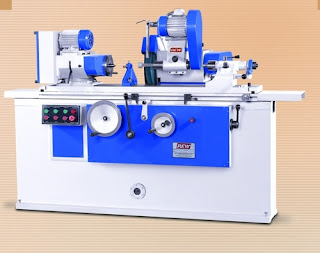 |
| Hydraulic Machine |
Now a days, hydraulic machines are high in-demand in the different industry segments. These can transfer enormous amount of power through small tubes, flexible hoses and other equipment that are making use of this technology.
The two theories on which Hydraulic Machines work are:
A force that acts on a small area can create a bigger force by acting on a larger area by hydrostatic pressure.
A large amount of energy can be carried by a small flow of highly pressurized fluid.
Powered by a regular engine or electric motor, in these machines, hydraulic fluid is pumped to a high pressure level and then moved throughout the machines by different actuators. The fluid in these hydraulic press machine is controlled directly or automatically by control valves and then distributed through hoses and tubes for various applications.
The pumped hydraulic fluid flows to the actuators or motors then returns to a reservoir where the fluid is filtered and then re-pumped. The path through which the hydraulic fluid circulates is known as hydraulic circuit. Hydraulic circuits are mainly of two types, Open Center Circuit and Closed Centered Circuit.
In Open Center Circuits, the flow of the liquid is returned to the tank through the control valve's open center. When the control valve is centered it provides an open return path to the tank and the fluid is not pumped to a high pressure. But, if the control valve is actuated, it routes fluid to and from an actuator and to the tank. The fluid's pressure will rise to meet any resistance. If the pressure rises too high, fluid returns to tank through a pressure relief valve and multiple control valves may be stacked in series. These circuits are highly preferred across the globe owing to their high performance and cost effective prices.
In Closed center circuits, full pressure is supplied to the control valves whether the valves are actuated actuated or not. The pumps vary in flow rate; these pump very little hydraulic fluid until the operator actuates a valve. The valve's spool doesn't need an open center return path to tank. Multiple valves can be connected in a parallel arrangement and system pressure is equal for all valves.
Hydraulic machinery are used in petrochemical, mechanical, engineering, agricultural and various allied industries. These can also be used in tin cooling systems and air-conditioning systems. Hydraulic pumps used in hydraulic machinery are powered by an electric motor or engine, which is connected through gears, belts or a flexible elastodynamics coupling in order to reduce heavy vibration and ensure hassle free & noiseless operation.
Various components present in hydraulic machines are hydraulic pumps (gear pump, vane pump), control valves, actuators, reservoir, accumulators, hydraulic fluid, filters, tubes, pipes, hoses, seals, fittings and connections.
Features:
- Sturdy and user-friendly structure
- Compact design
- High efficiency
- Reliable and trouble free operation
- Easy to install and maintain
- Longer service life
Great To Know
ReplyDeleteThe hydraulic equipment's work's on Pascal's law .As it say "The pressure, in a static hydraulic fluid in a closed system is everywhere the same"
This basic information was very usefull in my work .
Hydraulic Installation Kits
Thanks
Bruce Hammerson
Barrels are consumable items after all, and it does make sense to have some spares for fast change out. Replacement barrels for any handguns you have would be easier than machining one from steel. Ever seen the barrel in an LCP or Taurus TCP? There's so little metal left you wonder how you could hold it to machine.
ReplyDeleteHydraulic motors Baltimore
atico export are the manufacturer of Sediment Transport Demonstration Channel supplier exporter in india
ReplyDelete